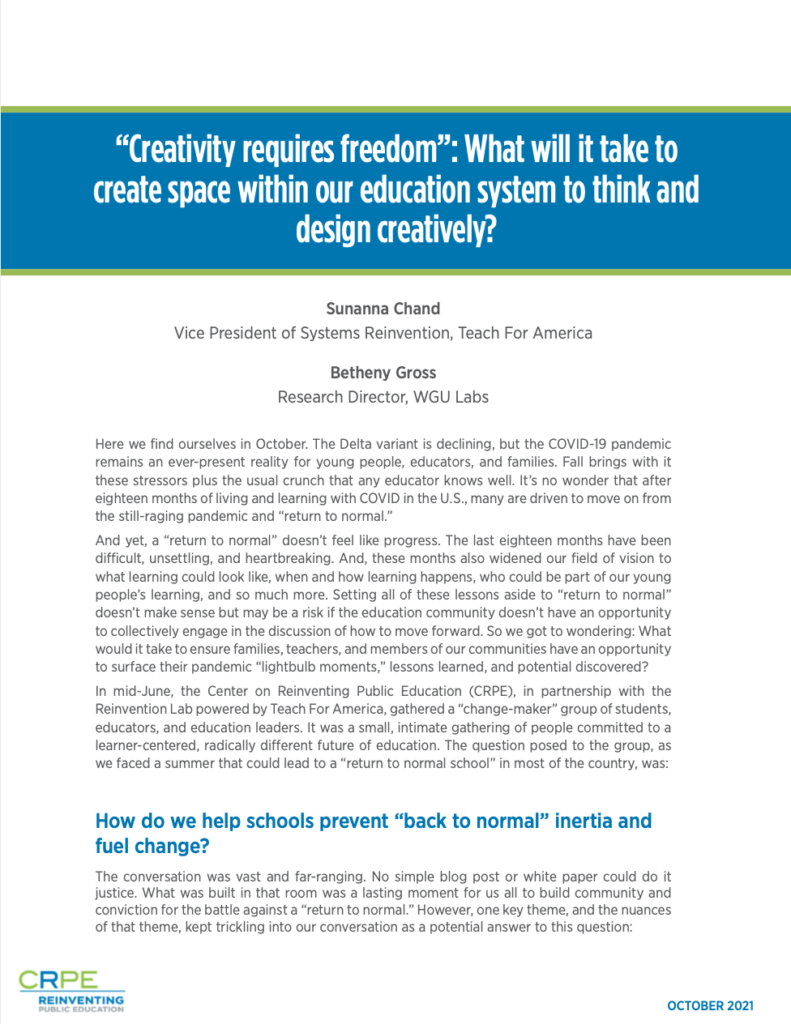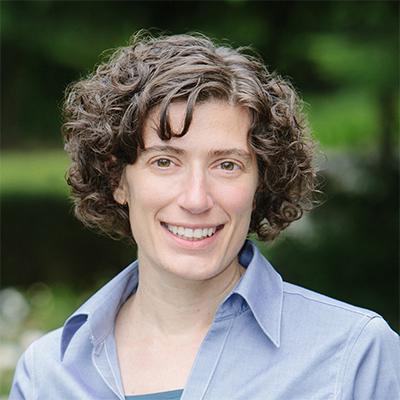In mid-June, the Center on Reinventing Public Education (CRPE), in partnership with the Reinvention Lab powered by Teach For America, gathered a “change-maker” group of students, educators, and education leaders. It was a small, intimate gathering of people committed to a learner-centered, radically different future of education. The question posed to the group, as we faced a summer that could lead to a “return to normal school” in most of the country, was: How do we help schools prevent “back to normal” inertia and fuel change?
One key theme, and the nuances of that theme, kept trickling into our conversation as a potential answer to this question: Create space.
How can school systems and communities not only create the space to be creative but in those spaces build a momentum for change that will defeat the pull to “return to normal”? A few ideas came through in the discussion.
1. Prepare for a marathon; not a sprint. When districts and communities have done the work of creating trust and a vision of the future with partners capable of realizing that vision, the system will be more ready to spring into action when it’s possible.
2. Design systems for inclusion. School systems have been designed in many ways to explicitly and implicitly exclude diverse ideas and thinking. Strict parameters around who can teach, when and where, limits on who can enter and use school facilities, and when and on what terms parents and teachers can discuss a child’s learning are just a few of the ways our school systems limit the diversity of perspectives and ideas in education. These limits can be changed. Small changes matter: opening up facilities for shared use or inviting community members into schools and classrooms to share their talents. More significant efforts, such as adopting more inclusive talent recruitment, rethinking the educator role to include individuals from broader training and experience, building out workplace learning experiences, or remaining open to community-supported learning communities can build even more energy for change.
3. Seek inspiration. It’s hard to innovate in a bubble. School and community leaders can seek out networks of innovators to find like-minded partners who will expose them to new perspectives and ideas—and challenge them. But as Jennifer O‘Meara of Edgecombe County Public Schools shared in our conversation, leaders “just need more proof points of what is possible in education, and new values, and how we’re measuring things.”





